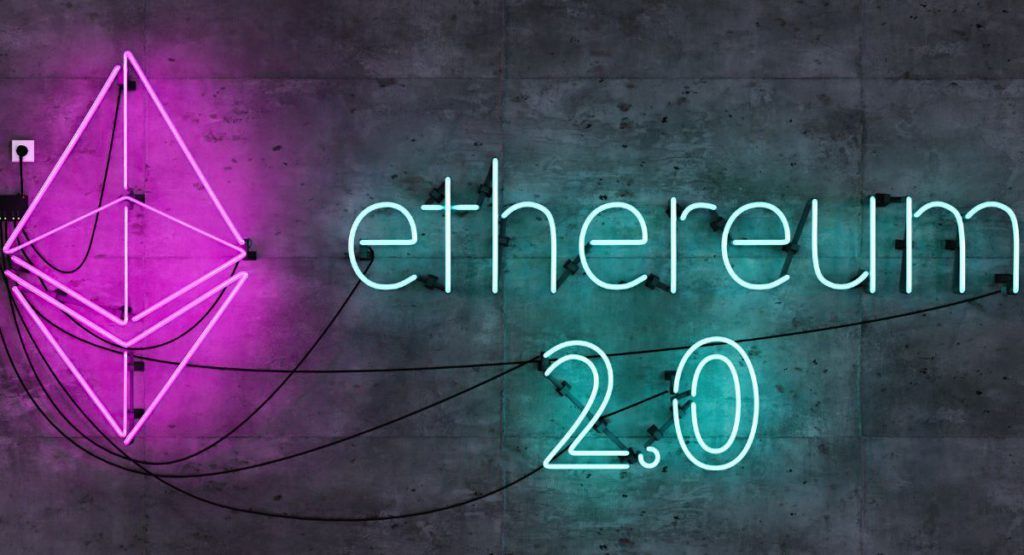What do you envision for the future of blockchain technology? The rapid evolution of cryptocurrency has changed how many perceive and engage with financial systems, with Ethereum remaining at the forefront. The transition to Ethereum 2.0 has far-reaching implications not just for the Ethereum network but for the entire crypto ecosystem. Understanding this impact is essential for anyone involved in or interested in the world of cryptocurrencies.
Understanding Ethereum 2.0
Ethereum 2.0, often referred to as Eth2 or Serenity, represents a significant upgrade to the existing Ethereum blockchain. This upgrade aims to address some of the critical limitations of the original Ethereum network, enhancing its scalability, security, and sustainability. The transition involves a shift from the current Proof of Work (PoW) consensus mechanism to a Proof of Stake (PoS) system, drastically altering how transactions are processed and validated.
What is Proof of Stake?
In a PoS system, validators are chosen to create new blocks and confirm transactions based on the number of coins they hold and are willing to “stake” as collateral. This method not only enhances the efficiency of transaction processing but also reduces the environmental impact often associated with PoW systems. The shift to PoS offers a more sustainable approach, aligning Ethereum with global trends toward energy efficiency.
Phases of Ethereum 2.0
The transition to Ethereum 2.0 has been structured into multiple phases:
| Phase | Description |
|---|---|
| Phase 0 | Launched the Beacon Chain, introducing PoS and allowing for staking. |
| Phase 1 | Will introduce shard chains to improve scalability by distributing data processing across multiple chains. |
| Phase 1.5 | Represents the merger of the existing Ethereum chain with the Beacon Chain, transitioning into the PoS environment. |
| Phase 2 | Final phase, where full functionality of the network will be achieved, including the ability to handle smart contracts and decentralized applications. |
Each phase is critically designed to ensure a smooth transition and progressively introduce new features that enhance the Ethereum ecosystem.
The Importance of Scalability
One of the most pressing issues that Ethereum faced was scalability. The existing PoW system limited transaction throughput, leading to network congestion and higher fees during peak times. Ethereum 2.0 aims to resolve these challenges through several innovative techniques.
Sharding: An Overview
One of the key features of Ethereum 2.0 is sharding, a method that breaks the blockchain into smaller pieces, or “shards.” Each shard handles transactions independently, increasing the overall capacity of the network. This enables parallel processing of transactions, which significantly enhances the throughput of the Ethereum network.
Benefits of Increased Scalability
The scalability improvement resulting from the transition to Ethereum 2.0 is manifold. Increased throughput means faster transaction times and lower fees, which in turn can enhance user adoption. A more efficient network can attract new projects and users, establishing Ethereum as the leading venue for decentralized applications (dApps).

Enhancing Security
As the Ethereum network evolves, so does the necessity for a robust security framework. The PoS mechanism provides enhanced security features compared to its predecessor.
Economic Security through Staking
In a PoS system, validators are economically incentivized to behave honestly. If they validate fraudulent transactions, they risk losing their staked assets. This economic model increases accountability, which can potentially lead to a more secure network.
Mitigating Attacks
The transition to PoS introduces barriers for potential attackers, making it increasingly difficult to conduct malicious activities such as 51% attacks. In a PoW system, acquiring enough computational power is a significant challenge; however, staking a significant amount of cryptocurrency under PoS can deter malicious attempts.
Environmental Impact
The environmental ramifications of cryptocurrency mining have come under increasing scrutiny. The transition to Ethereum 2.0 offers a much-needed solution in terms of sustainability.
Reducing Energy Consumption
By shifting from PoW to PoS, Ethereum 2.0 is projected to reduce energy consumption by approximately 99%. This significant reduction is imperative as public awareness grows regarding the environmental impact of blockchain technologies.
Aligning with Global Goals
As nations focus on climate change and energy consumption, Ethereum’s transition can position it favorably within regulatory frameworks aimed at sustainability. This can attract investments from environmentally conscious entities and align with global initiatives to reduce carbon footprints.

The Impact on DeFi (Decentralized Finance)
The Ethereum ecosystem is the backbone for a multitude of DeFi platforms, which have gained immense popularity. As Ethereum transitions to 2.0, these platforms will experience both direct and indirect impacts.
Improved Transaction Speeds
With increased scalability and reduced transaction fees, DeFi platforms on Ethereum will benefit tremendously. Faster transaction times can improve the overall user experience, attracting more users to these decentralized financial services.
Security in Smart Contracts
The enhanced security features inherent in PoS may engender greater confidence in DeFi protocols built on Ethereum. Users may be more inclined to engage with projects that they view as secure, potentially leading to a surge in participation and liquidity in DeFi markets.
The Role of NFTs (Non-Fungible Tokens)
Ethereum is the foundation for a vast array of NFT projects, revolutionizing the world of digital ownership. Ethereum 2.0’s impact will be felt across this vibrant sector.
Reduced Costs for Creators
With lower transaction fees resulting from heightened scalability, artists and creators will face fewer barriers in minting NFTs. This reduced cost can promote creativity and innovation, allowing more creators to enter the market.
Enhanced User Engagement
A more efficient Ethereum network can lead to smoother experiences for NFT buyers and sellers, enhancing engagement. As transactions become quicker and less costly, it may inspire a new wave of users to invest in and trade NFTs.

Adoption Across Industries
The implications of Ethereum 2.0 extend beyond the realm of cryptocurrencies. Several industries stand to gain from the upgrade.
Finance and Banking
As traditional financial institutions explore blockchain technology, Ethereum’s advancements may facilitate the development of innovative products. Faster and cheaper transactions make it a viable option for cross-border payments and settlements.
Supply Chain Management
With improved security and transparency features, Ethereum 2.0 can revolutionize supply chain processes. Companies can utilize the blockchain to increase visibility and trust among stakeholders, ensuring the integrity of their supply chains.
Healthcare
Healthcare can significantly benefit from enhanced data integrity and security. By leveraging Ethereum’s decentralized framework, patient records can be stored securely while ensuring that access is limited to authorized individuals only.
Challenges Ahead
Despite the promising prospects of Ethereum 2.0, several challenges linger on the horizon.
Technical Complexities
Transitioning to a new protocol involves intricate technical adjustments. Ensuring a seamless transition that preserves the integrity of the existing network is paramount. Technical failures or bugs during the transition could result in significant setbacks.
Regulatory Considerations
As Ethereum 2.0 gains traction, regulators may impose new frameworks to govern its use. Navigating through these regulations can pose challenges, and projects built on Ethereum may need to adapt to comply with changing laws.

The Community Response
The Ethereum community has remained highly engaged regarding the transition to Ethereum 2.0. This active involvement is crucial for the upgrade’s success.
Staking Participation
One of the most significant aspects of Ethereum 2.0 is staking. With the introduction of the Beacon Chain, users have begun staking their ETH, contributing to the network’s security. It is essential for you to understand how staking works and its potential benefits when engaging with the Ethereum ecosystem.
Ongoing Development
Numerous projects and developers are continuously working to enhance Ethereum’s potential. As the ecosystem grows, opportunities for collaboration and innovation are abundant, fueled by community involvement and synergy.
Long-term Perspectives on Ethereum 2.0
Ethereum 2.0 represents more than just an upgrade; it signifies a potential paradigm shift in how we interact with technology and finance.
A Future of Interoperability
As blockchain technology continues to advance, Ethereum 2.0 aims for interoperability with other networks. This could pave the way for interconnected systems, enabling more seamless interactions between various blockchain environments.
Leadership in the Blockchain Space
Ethereum has consistently held a leadership position in the blockchain sector. With the transition to Ethereum 2.0, it strengthens its footing as an innovator. Your involvement in this ecosystem may lead to exposure to new opportunities and advancements.

Conclusion: The Future of Ethereum and You
The impact of Ethereum 2.0 is profound, extending far beyond the technical enhancements it introduces. You may become part of a transformative era in the cryptocurrency landscape as scalability, security, and sustainability improve. Understanding these developments equips you with the knowledge to navigate this evolving space effectively, whether you are an investor, developer, or simply an interested participant in blockchain technology. The future is not just about Ethereum; it’s about how you can play your role in this intricate yet fascinating ecosystem.



 Bitcoin
Bitcoin  Ethereum
Ethereum  XRP
XRP  Tether
Tether  USDC
USDC  Lido Staked Ether
Lido Staked Ether